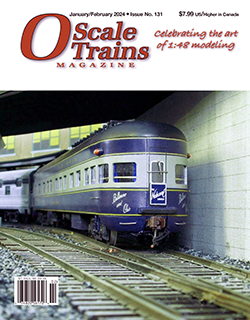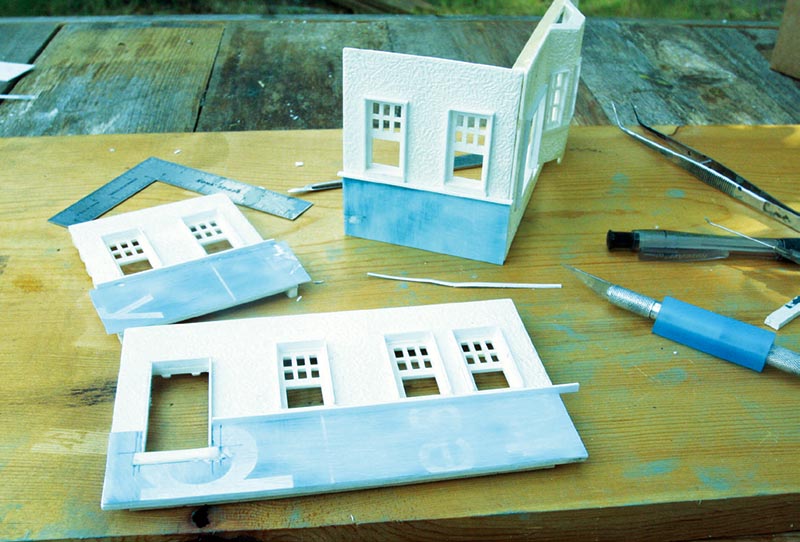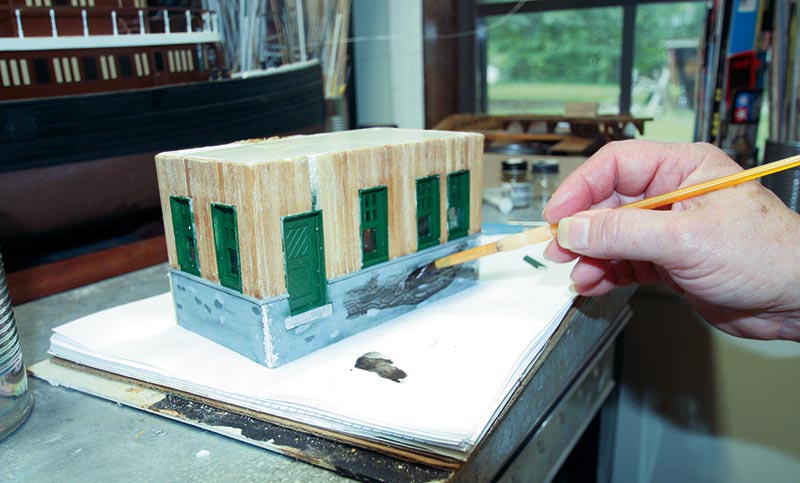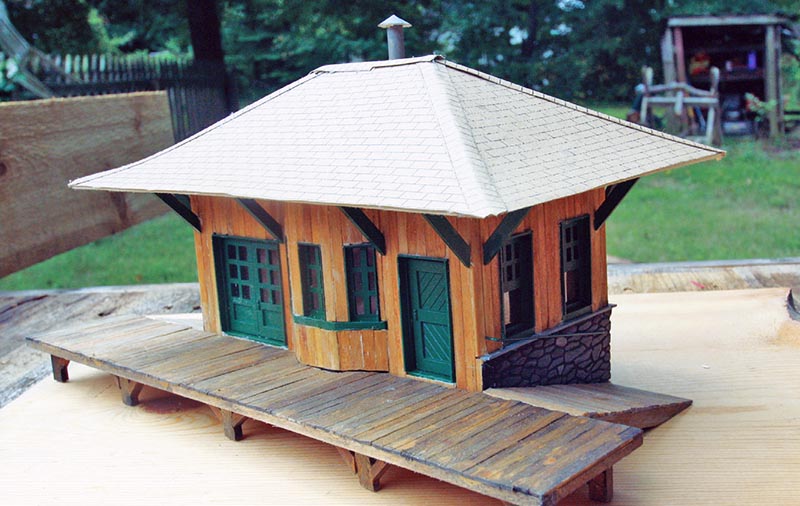 by Mark Nickelson/photos by the author
by Mark Nickelson/photos by the author
Bachmann’s old Suburban Station is distinguished by its one-piece wraparound platform and ramps, and the trackside bay windows, presumably representing the ticket booth. It has character. It has potential. But it leaves a lot of room for improvement. First, there’s that silly stucco siding. It needs to be covered up, and will be in this project.
Second, there’s the shallow-pitch roof. It looks okay from certain angles, but not others. And the roof overhang needs bracing all around. Train stations always had that. We’re going to fix the pitch by making an entire roof from scratch, at a slightly steeper pitch. This will be easier than you may think. We’re going to glaze all the windows, which is the least we could do to improve them.
Finally, we’re going to replace the plastic platform and ramps with a wooden assembly. I did this for two reasons. First the trackside platform needed to be wider to accommodate crowds of suburban commuters twice a day. Second, nothing looks as much like wood as wood. Also, I’ve built lots of wooden platforms, and they’re practically a reflex. If this is your first one, you can expect to like the results, especially for the modest level of effort.

If hip roof geometry is new to you, follow Step 2 on some scrap mate-rial before you lay it out on the good stuff. To make a new hip roof, I laid out the roof on a single piece of Task-board to create the geometry for a roof ridge height of 1.75”. Because I’ve already developed the hip dimensions, you can do this using the following measurements: hip ridge (R) = 4.75”; roof side width (G) = 3.38”; roof perimeter 5.75” x 8.75”. Lay out the roof on your stock using a square and a compass. Then cut and score, and join the two open hips (R). I added a flange of scrap cardstock to strengthen the seam.
The new roof was covered with the last of my tan shingle stock from the late Fred Dole, who is still sorely missed. You can make shingle paper using Excel, and then print the shingles onto some textured cardstock from the scrap-booking aisles at a craft store. I’m doing this going forward. Or, of course, you can just get some store-bought shingles. Meanwhile, wash the side panels and straighten them by gluing and clamping some stout lengths of styrene stock.

Meanwhile, stain a bunch of coffee stirrers and some heavy timber for the platform. Frame the windows, because the window frames need to extend farther than the plane of the boards. On as wood. Also, I’ve built lots of wooden platforms, and they’re practically a reflex. If this is your first one, you can expect to like the results, especially for the modest level of effort…


